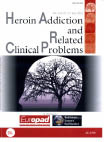HARCP Archives
| Browse by article | Browse by volume |
Heroin Addiction and Related Clinical Problems: 2025, 27, 18
Diagnostic Definitions of Overdose and (Opioid-Induced) Respiratory Depression Relevant to Remote Monitoring via Accelerometry
Alexander Adam, John Dillon, and John Strang
Digital Object Identifier:
https://doi.org/10.62401/2531-4122-2025-18
Summary: Background: The global opioid crisis presents an escalating public health emergency, with opioid-induced respiratory depression (OIRD) identified as the primary mechanism of fatality. Current clinical interventions are reactive and often occur after significant physiological decline. Thus, there is a clear need for continuous, non-invasive monitoring solutions in non-clinical environments which allow early detection of respiratory compromise. Accelerometer-based wearable devices offer promise by tracking actigraphy and chest-wall movements to detect compromise, but there is a need for clarity about the diagnosis of opioid overdose and identification of respiratory depression. This systematic literature review seeks to identify clear, uniform, markers of OIRD for detection, diagnosis and future research. Results: A broad range of definitions of respiratory depression are used interchangeably in literature and commonly used thresholds for alarm and intervention are insufficiently selective. Observation of substance use suggests that a respiratory rate of 5 breaths per minute may be a threshold below which risk of harm increases. Extended apnoeic episodes and intermittent respiratory pauses are not routinely present in effective, ‘normal’ breathing. Single apnoeic episodes of >30 seconds, or three respiratory pauses of >20 seconds within a three minute period, are indicative of unstable breathing and reduced ventilatory self-correction, which are characteristic of OIRD and suggest a progressive risk of incipient respiratory decompensation. Conclusions: Research into opioid overdose suffers from the lack of standardised definitions of OIRD which limits consistency and interpretation. There is a need for consistent comparison between severity of respiratory depression events to identify situations indicative of imminent physiological extremis. Low-cost and easily deployable methods could enable real-time continuous monitoring and alert infrastructure. Accelerometry would appear well-placed to accurately identify onset and progression of respiratory depression. Threshold criteria are proposed which may provide a useful basis for triggering potentially life-saving interventions, as well as enabling further study in this field.
Keywords: Opioid-Induced Respiratory Depression (Oird); Drug Overdose; Drug-Related Death; Accelerometry; Respiratory Rate; Apnoea
